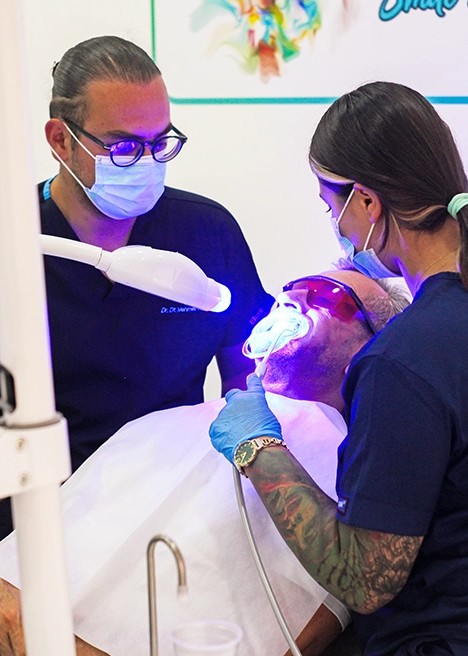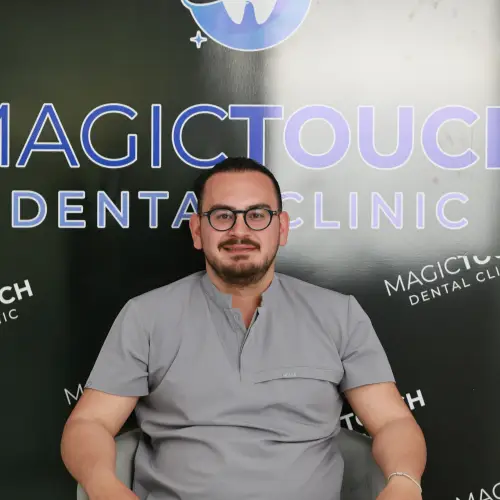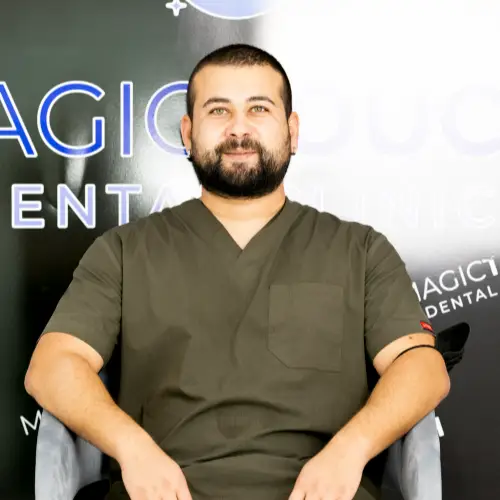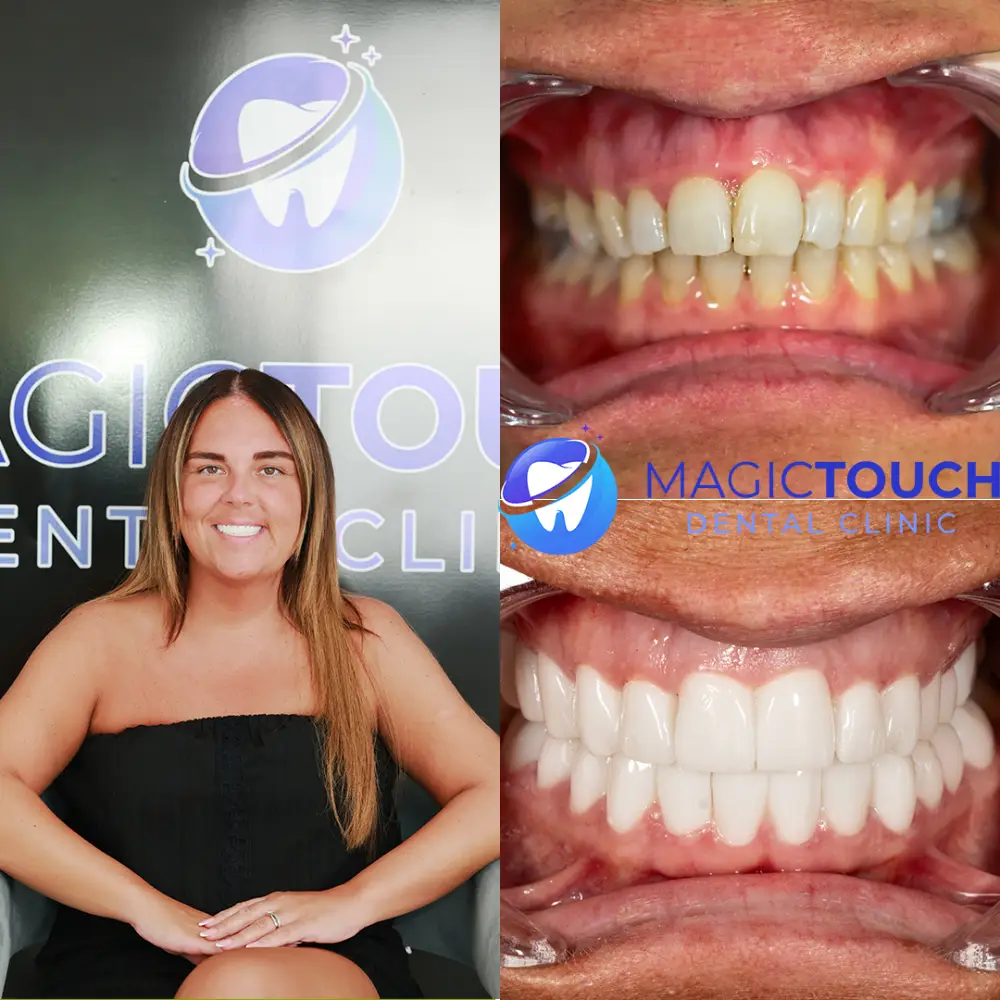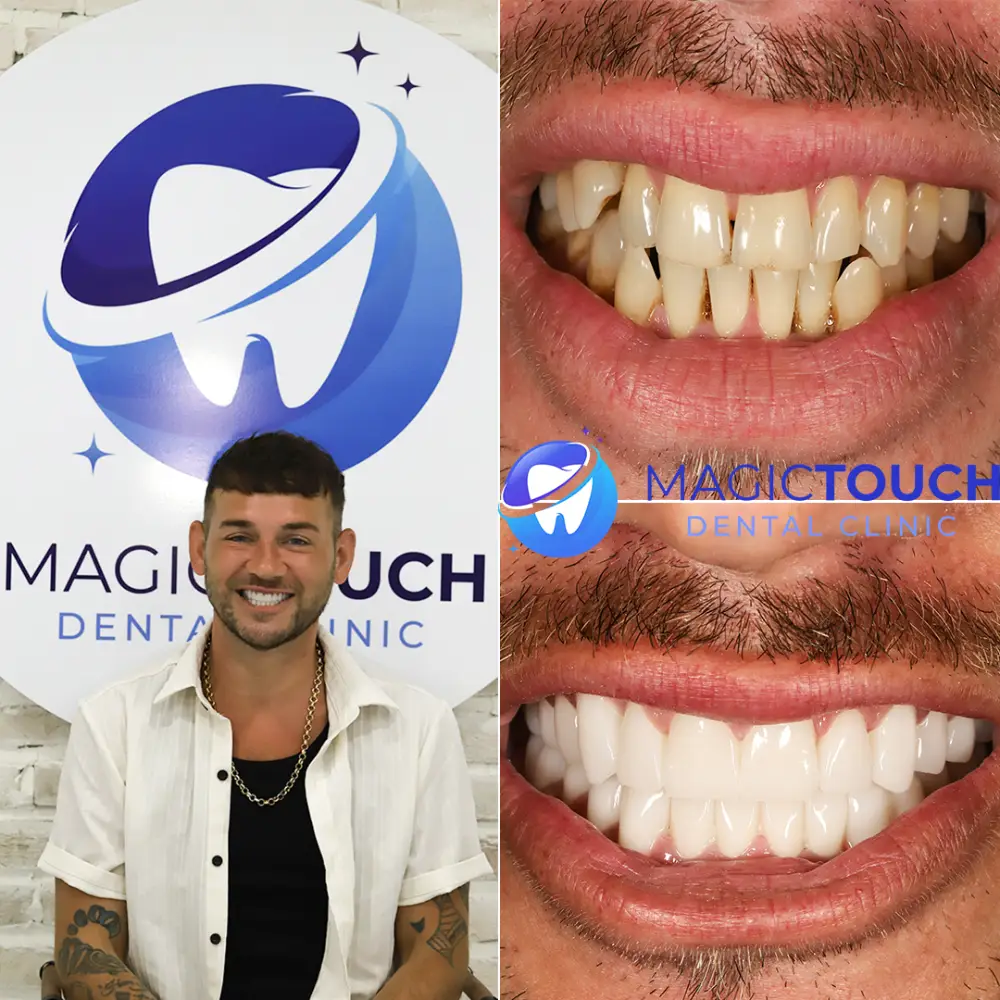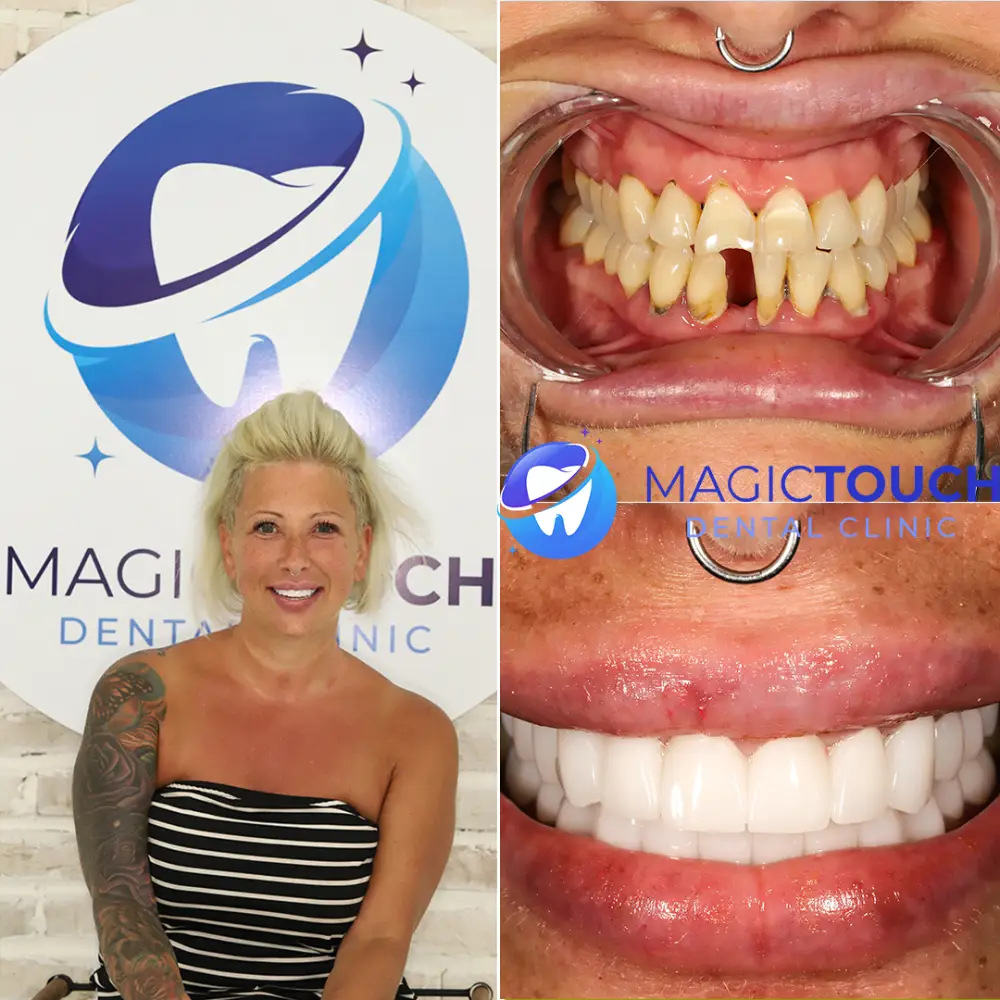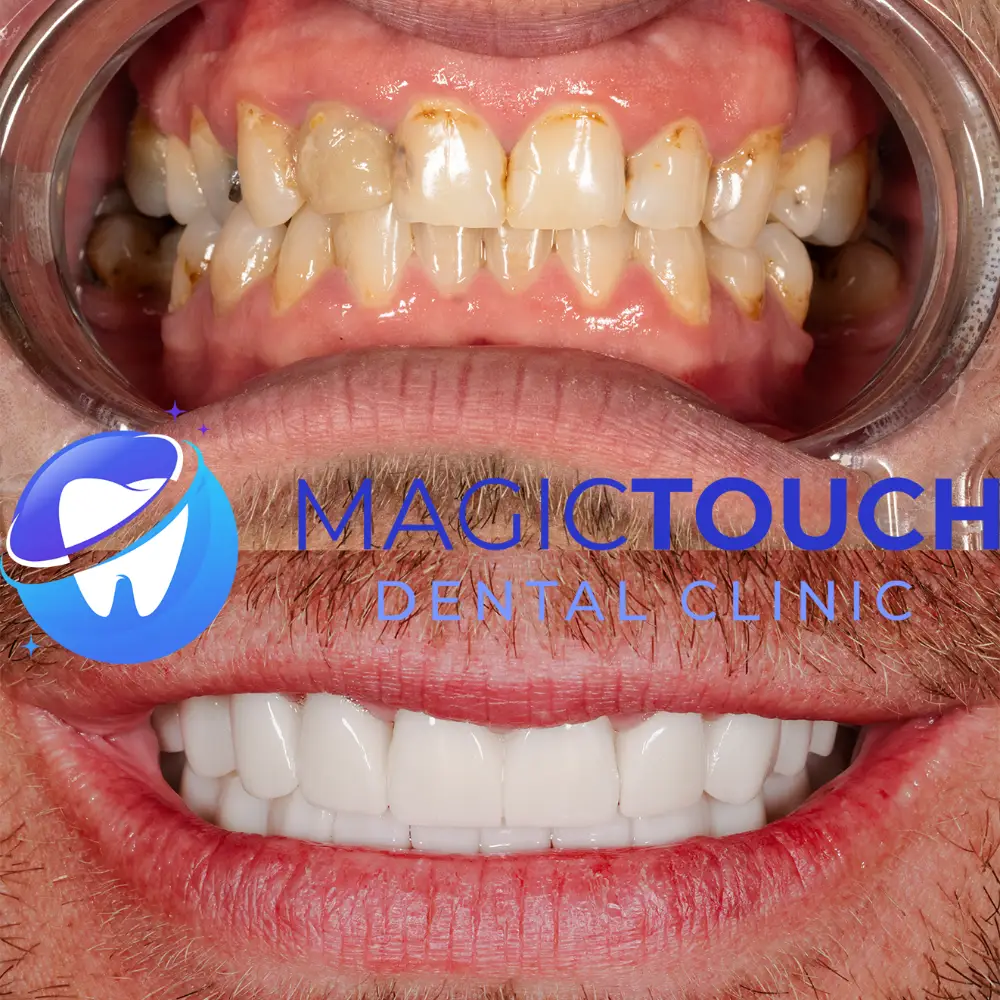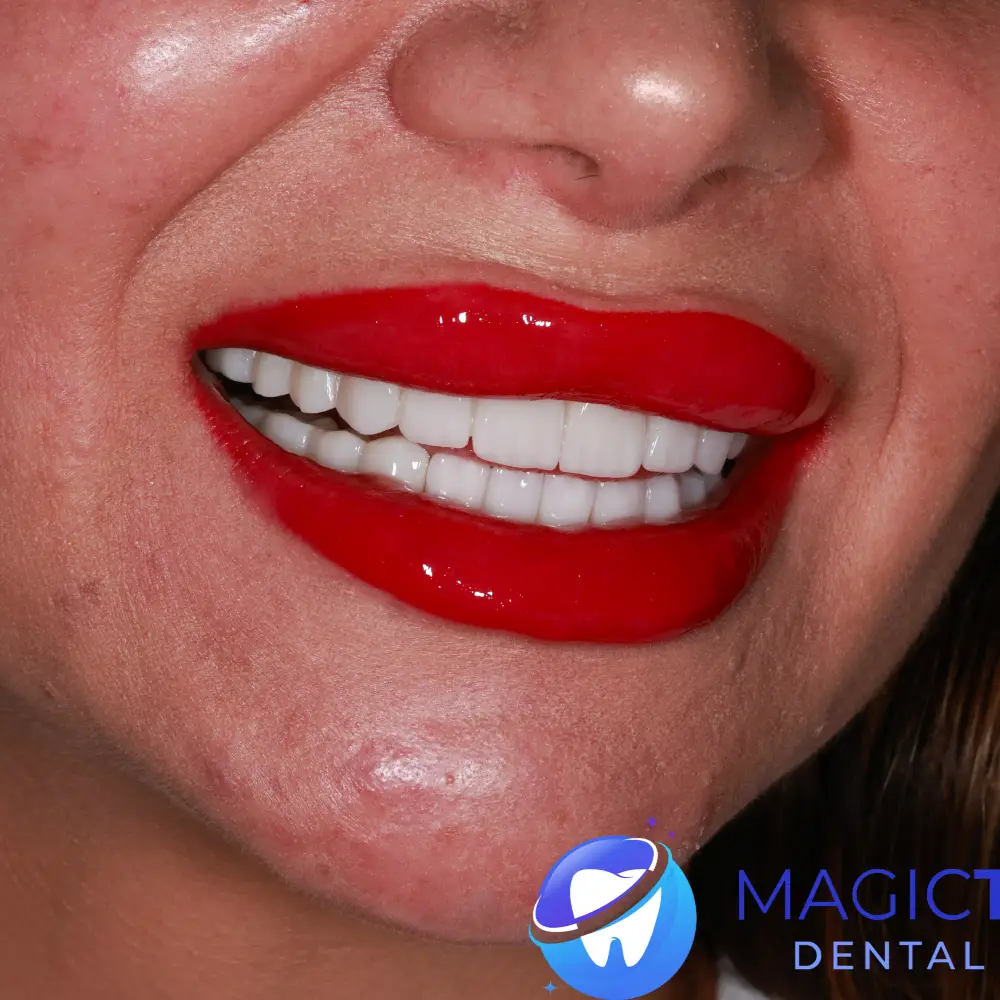Complete dental care for every smile.
Our featured treatments include our most popular and effective treatments,
specifically designed to meet your oral and dental health
needs.
Why trust us?
Our experienced team ensures a comfortable and stress-free experience for every visit, prioritizing your care and satisfaction.
Personalized treatments designed for your perfect smile
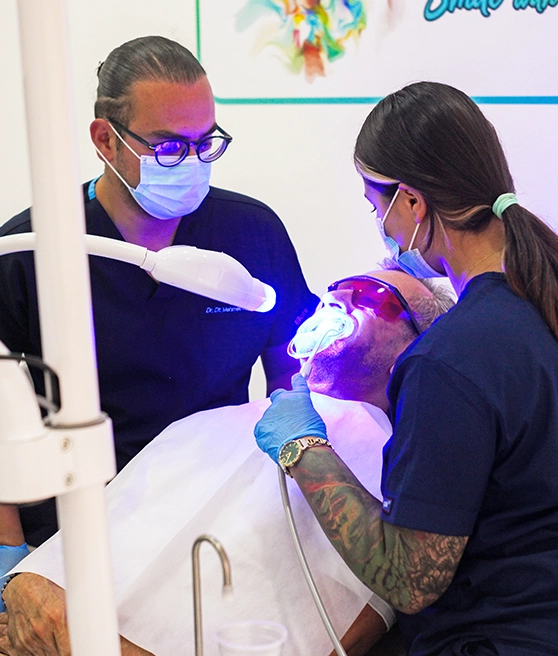
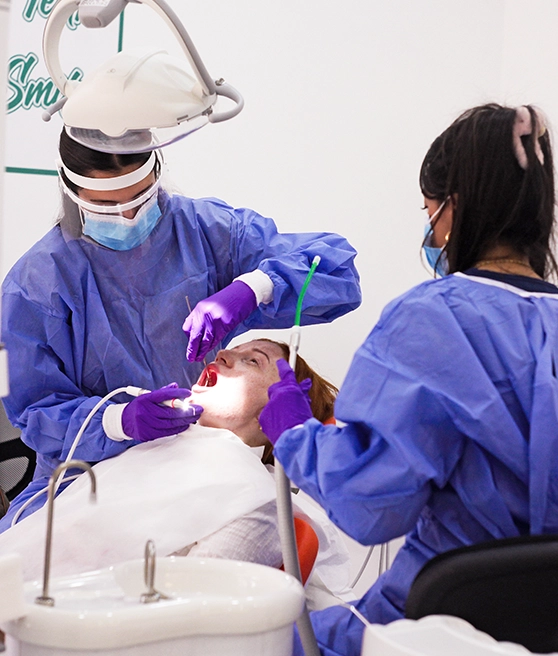
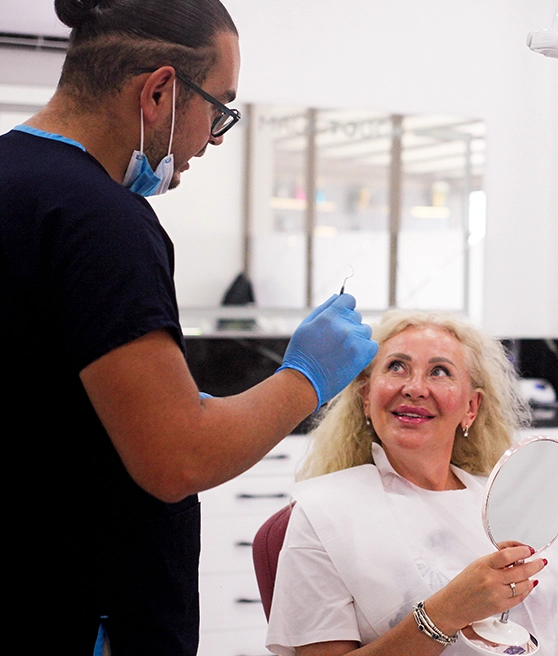
What our patients are saying
Every smile tells a story.
Let's create yours together.
Our Process
We follow a patient-centric approach to ensure a smooth and comfortable dental experience.
-
Consultation
We assess your dental needs and create a personalized plan.
-
Treatment Plan
A tailored plan to address your specific dental concerns.
-
Smile Transformation
Enhancing your smile with healthier teeth and improved aesthetics.
Our Team.
Our experienced dentists delivering trusted care and beautiful, healthy smiles.
Transformations that speak for themselves.
Get in touch.
MagicTouch Dental Clinic
Contact Form
Get in Touch
Providing expert dental care with advanced technology in a comfortable and friendly setting. Your smile is our priority!







